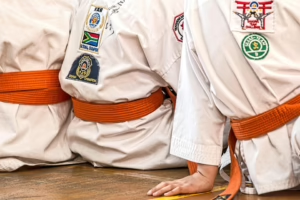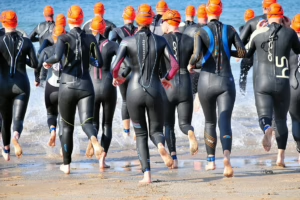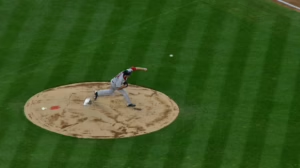Furry Criteria: How Animal Sports Are Shaping Canine Culture
The modern canine culture has evolved in ways that reflect broader societal changes and interests. One of the most influential factors in this transformation has been the rise of animal sports, which encompass everything from agility and obedience competitions to flyball and dock diving. These activities not only provide physical outlets for dogs but also foster unique communities and elevate the status of canines in human society. The following exploration delves into how animal sports shape canine culture, underpinned by various criteria that define the dynamics of these events.
1. A Historical Context: The Genesis of Animal Sports
The practice of using animals for sport is far from a recent phenomenon. Historically, various cultures have engaged in activities that involved both competitive and utilitarian aspects of animal training. From ancient Rome’s gladiatorial games to hunting with dogs in medieval Europe, humans have long recognized and harnessed the skills and abilities of their canine companions.
Modern animal sports, however, have shifted these ancient practices away from utilitarian purposes toward structured competitions designed primarily for entertainment and community building. This change has played a significant role in shaping public perceptions of dogs and their roles within families and society at large.
1.1 The Emergence of Organized Events
The rise of organized canine sports became more pronounced in the late 20th century, with the establishment of formal competitions like the American Kennel Club (AKC) events. The emergence of agility and obedience trials signaled a new era in which training, skill, and performance became the hallmarks of appreciation for animal athleticism. These organized events created benchmarks that dog owners and trainers could aspire to, thereby elevating the status of, and interest in, canine sports.
2. Community Building through Animal Sports
One of the most noteworthy aspects of animal sports is their capacity to build communities. Dog owners, trainers, and fans converge around shared interests, fostering relationships that might not have otherwise developed.
2.1 Social Interactions and Networking
The competitive landscape of animal sports facilitates social interactions among individuals who might come from diverse backgrounds but are united by their passion for dogs. Events often serve as hubs for networking, providing opportunities to form friendships, collaborate on training techniques, and even engage in business ventures related to pet care and training.
2.2 Support Systems for Owners
The camaraderie developed within these communities offers emotional and practical support for dog owners. Groups dedicated to specific breeds or sports often provide advice, encouragement, and a sense of belonging. This is particularly valuable for new dog owners navigating the challenges of training and socialization.
3. Training and Skill Development
Animal sports have introduced rigorous training standards that have significantly influenced how owners interact with their dogs. The commitment to developing skills in both dogs and their handlers has raised the bar for what is expected in canine companionship.
3.1 Training Techniques and Innovations
Various methodologies have emerged within the field of training, with many focused on positive reinforcement and behavioral science. The rise of animal sports has supported the development of innovative training methods, enhancing the bond between dogs and their owners. These techniques are increasingly disseminated through workshops, online platforms, and seminars, creating a wealth of resources available to the general public.
3.2 Impact on Breed Selection and Popularity
Certain sports have also impacted breed popularity and selection. Breeds traditionally associated with herding, hunting, or working are frequently highlighted in competitions, leading to increased interest and demand for these types of dogs. Owners are often more inclined to choose breeds based on their athletic potential and suitability for specific sports, contributing to shifts in breed demographics.
4. Cultural Perceptions of Canines
The role of animal sports extends beyond the individual relationships formed between dogs and humans; it also influences broader societal views about canines.
4.1 Elevating the Status of Dogs
As dogs demonstrate their prowess in competitive settings, public perception shifts, elevating their status from mere pets to athletes in their own right. This status can serve to foster greater respect for canine abilities and a deeper understanding of their needs and welfare.
4.2 Advocacy and Awareness
Many organizations within the animal sports community emerge as advocates for canine welfare, using their platforms to raise awareness about responsible breeding, training, and care. The visibility of these events allows for messages about animal rights and welfare to reach broader audiences, helping to highlight issues such as overbreeding, abandonment, and animal cruelty.
5. The Influence of Technology on Animal Sports
Recent technological advancements have dramatically altered the landscape of animal sports, from training aids to streaming services that broadcast competitions.
5.1 The Role of Social Media
Social media platforms have transformed how owners document and share their animal sports journeys. Many trainers and competitors use platforms like Instagram, TikTok, and YouTube to showcase their training techniques and competition highlights. This visibility helps spread enthusiasm for various sports and encourages community involvement as viewers engage with the content.
5.2 Innovations in Equipment and Training Aids
Technological advancements have also led to the development of sophisticated training aids and equipment tailored to improve performance in various sports. Items like specialized harnesses, agility course equipment, and GPS trackers provide new opportunities for enhancing dog training and performance tracking.
6. The Economic Impact of Animal Sports
The rise of animal sports has also spurred significant economic implications. The growth of competitive canine events has given rise to a multifaceted industry comprising trainers, dog food manufacturers, veterinary services, and more.
6.1 Pet Industry Growth
The pet industry has expanded rapidly to meet the demands of dog owners engaged in sports. Businesses specializing in high-quality training aids, nutritional products, and canine health care services have proliferated, leading to increased economic activity and job creation within this sector.
6.2 Tourism and Event Hosting
Major sporting events like the Westminster Kennel Club Dog Show or international flyball competitions attract visitors from around the world, driving tourism and local economic growth for host cities. These events boost local businesses, including hotels, restaurants, and pet-related services.
7. Environmental and Ethical Considerations
While animal sports have contributed to a vibrant canine culture, they also raise questions related to animal welfare, the environment, and ethics.
7.1 The Welfare of Competing Dogs
The focus on performance in various sports can sometimes lead to concerns about the welfare of competing dogs. Overtraining, pushing dogs beyond their physical limits, and inadequate consideration for their mental well-being are issues that need to be addressed within competitive circles. Organizations often set guidelines to ensure that dogs are treated humanely and that their health is prioritized before, during, and after competitions.
7.2 Sustainable Practices in Pet Care
As awareness of environmental issues grows, there is also a push for more sustainable practices within the pet care industry. From eco-friendly dog food options to biodegradable waste bags, dog owners and businesses are increasingly seeking to minimize their ecological footprints while still providing for their pets’ needs.
8. Case Studies: Successful Animal Sports Communities
To illustrate the diverse impacts of animal sports on canine culture, observing successful communities offers valuable insights.
8.1 Agility Competitions
Agility classes have created thriving communities where both dogs and handlers work collaboratively to navigate challenging courses. These events foster a deep bond between canines and their owners, as well as promote healthy lifestyles that encourage physical activity.
8.2 Therapy and Service Dogs in Sports
The role of therapy and service dogs has been reinforced through sports, demonstrating the diverse capabilities of canines. While providing critical assistance to their handlers, these dogs often participate in events that highlight their extraordinary abilities, leading to greater public awareness of their roles.
9. Conclusion: Looking Ahead
The influence of animal sports on canine culture is undeniable, shaping how we view and interact with our four-legged companions. As this landscape continues to evolve, including shifts in technology and growing awareness of ethical considerations, the future of canine sports holds great potential for enriching both human and canine lives alike.
9.1 Embracing the Future
As the popularity of animal sports continues to rise, it is essential to emphasize responsible ownership, training, and appreciation for the unique needs and qualities of dogs. Striving to maintain a balanced and respectful relationship with our canine counterparts is crucial for future generations to fully embrace the bonds between us and our beloved furry friends.
By fostering community, prioritizing welfare, and harnessing the potential of technology and innovation, we can cultivate a canine culture that not only celebrates the athleticism of dogs but also honors their place within our homes and hearts.
Modern_footnote_source: Please refer to the relevant academic journals and studies to further explore the impact of animal sports on canine culture, their historical context, and the communities built around them. For case studies and statistics, peer-reviewed articles in veterinary medicine and animal behavior can offer comprehensive insights.


























Add Comment